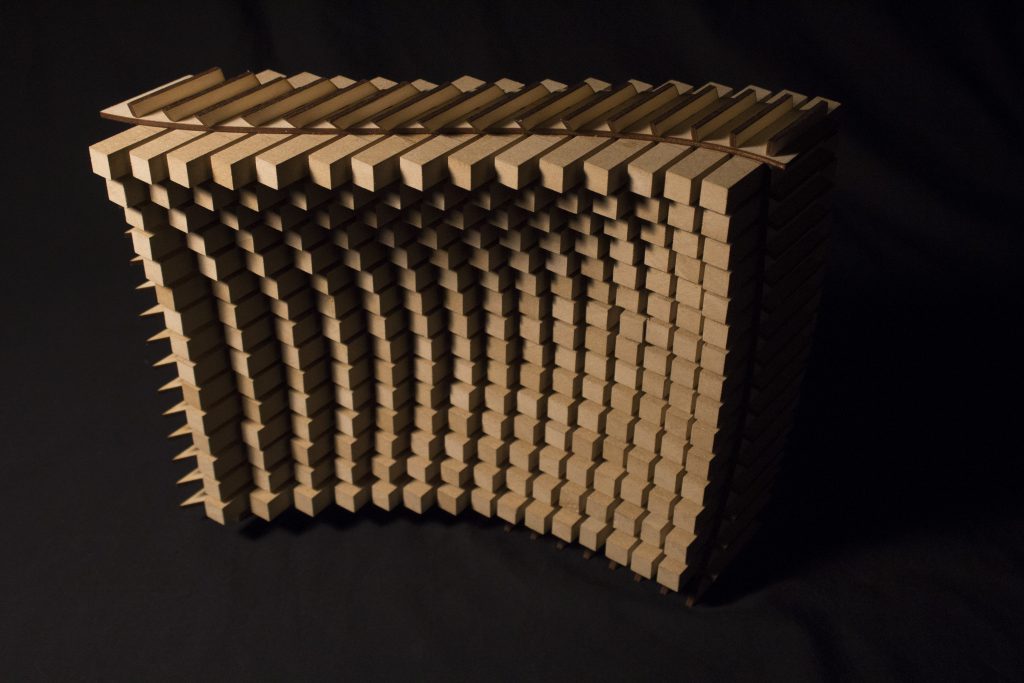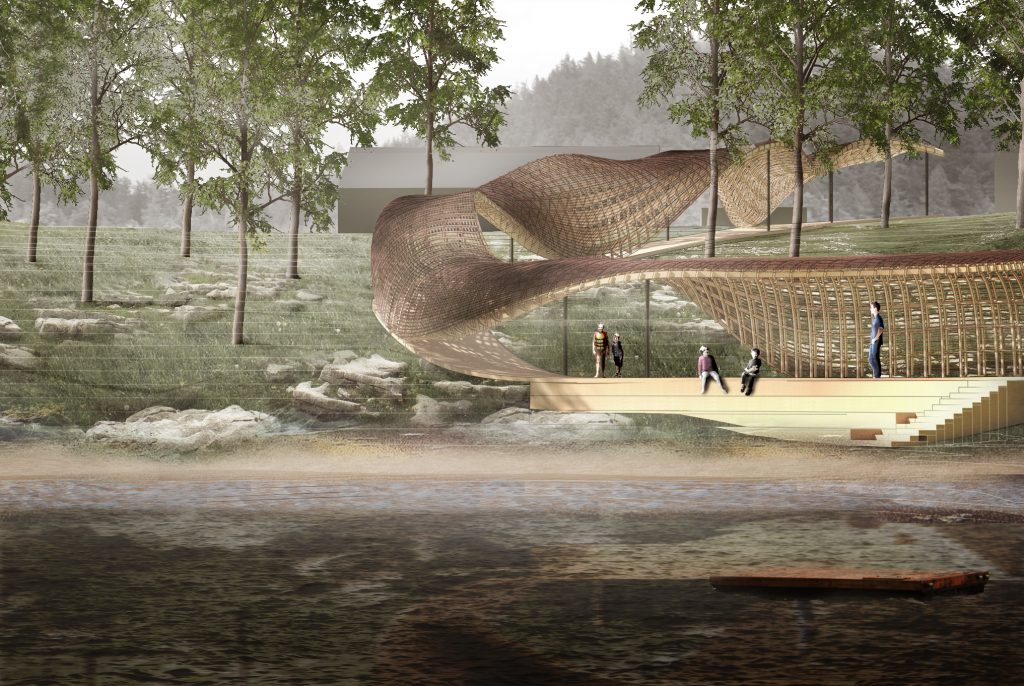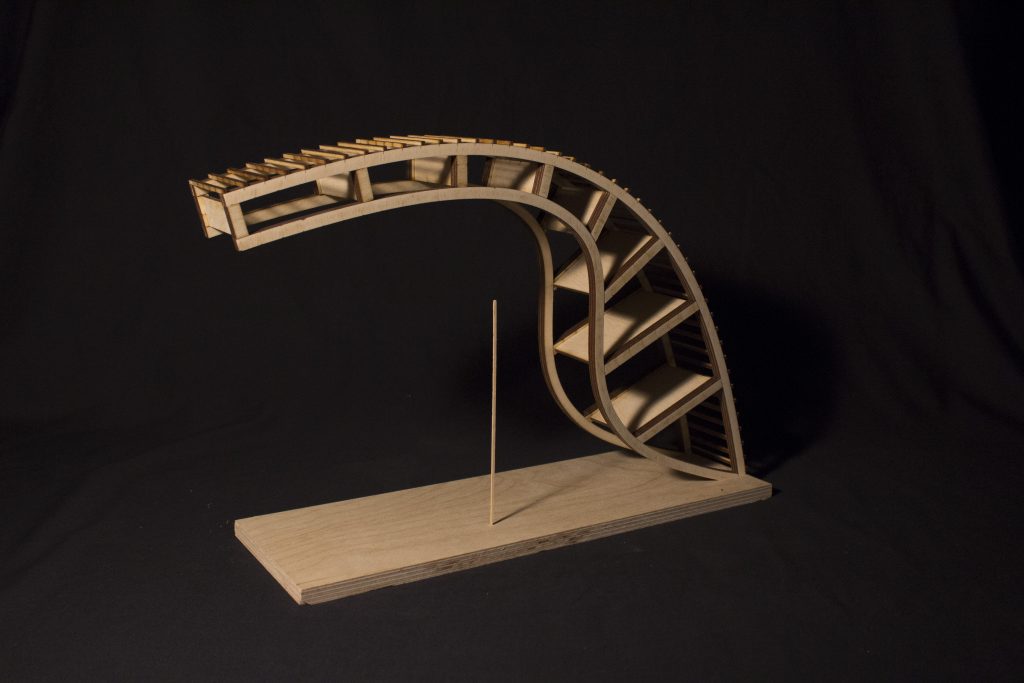[ TECHNOLOGY / CULTURE / ENVIRONMENT ]
While we see many industries around the world reeling from the disruptive effect of technology, the construction industry remains intransigent both in materials and methods. While change for change’s sake is a fool’s errand, in construction there may be a clear benefit to innovation – namely the environment. The building sector is responsible for the use of 47.6% of the energy produced in the US (48% in Canada) and 44.6 % of the total CO2 emissions. Building construction is 5.9% of this total. Innovation in design and construction could therefore provide a significant contribution to reducing GHG emissions both within Canada but also internationally.
Wood is a renewable resource and absorbs carbon as it is grown. As such it is one of the most sustainable building materials that can be used. It is also light to transport, can be used as both structure and finish, and is easily machinable, lending itself to energy efficient construction as well as facilitating a large variety of architectural forms and expressions. This studio will focus on where material, structure and processes of building come together with a focus on the use of wood. With new technology comes new opportunities and the question for this studio is how new technologies in digital design and robotic fabrication of wood can contribute to make building less environmentally costly.
[MATERIAL]
Timber structures have taken many forms throughout the ages and across cultures. Each timber typology reflects the technology, environment and cultural values of their times. Timber structures play a large role in the architecture to which they belong – they simultaneously reflect light and provide mood, express the technology of the time, and provide supporting structure. Use of timber is thus compelling in architecture but the basic form of the structure has not changed significantly over time: many of the timber structures take the form of a post and beam of some description in a hierarchical manner. This studio challenges not only the heirarchy of post and beam but the singularity of its use. Wood can perform as structure, finish, insulation and furniture but a hierarchical use of wood limits its use to only structural and requires other elements to take on other roles. Perhaps new conceptions of wood may take on other roles simultaneously rather than in isolation.
[OLD GROWTH, NEW GROWTH]
The physical form of trees is different in the new growth and the fast growth we have in today’s forests. The wood sources which are sustainable are second and third growth forests. These forests have characteristics which differ from timber used in previous generations. The timber of today is fast growing and planted closely spaced to grow tall and thin. This commodity timber is smaller in diameter and thus may be suited to a different type of design.
One of the innovations in material recently involves engineered wood products. These products are made of smaller pieces, particularly suitable for use in engineered wood products. The combining of smaller pieces into a larger whole piece leads to different and potentially more flexible forms while increasing sustainability of the material by its reduced impact on old growth forests as well as its ability to use rapidly renewing forest resources.
[CONNECTIONS]
The joint is where the action is in wood structures. Beautiful wood joints have been celebrated in Japanese and Chinese architecture for centuries. Wood joinery is a highly celebrated craft appreciated for its combination of beauty and function.
Innovations in joints include a resurgence of wood to wood connections after many years of metal connection pieces Innovations in glued connections including developments of wood based glues are also of interest. Finger joints which use larger surface areas are already in widespread use to splice smaller dimensional lumber. What possibilities are there for innovation in connections?
[VARIATIONS ON A THEME]
Digital fabrication methodologies allow us mass customization as well as permitting us infinite variations on a theme. As such, each piece can be cut differently and precisely placed in relation to the next piece. Ideally the assembly instructions will be included in the pieces so assembly is easier, quicker and more accurate.
[MINIMIZING MATERIAL]
Many of our construction processes are wasteful and result in much material going to landfill. One of the arguments used for prefab is often that the material use is more efficient since things can be planned to minimize material waste and waste from the production stream can be reused or disposed of in a more sustainable way. The challenge is to develop a design process which acknowledges and addresses this issue.
[STUDIO SEQUENCE]
[ WORKSHOP ] Robot Made: Large-Scale Robotic Timber Fabrication in Architecture
Given by the Institute for Computational Design from Stuttgart (Oliver Krieg and David Correa) this workshop will design, fabricate and build a full size robotically fabricated installation on campus. Fabrication will be at the Centre of Advanced Wood Construction on UBC campus.
[ PRELUDE ] SCULPTURE
This introductory exercise will allow students to explore the property of wood materials and the connections between them.
[ PS 01: DESIGN BUILD ] GAMBIER ISLAND WATER SPORTS STORAGE FACILITY
Students will be asked to speculate on a wood material system to be robotically fabricated for a water sports storage facility for Camp Fircom on Gambier Island. This project is in collaboration with the Design Build course.
[ PS 02: COMPETITION ] MAKER LAB FOR GREEN FUTURES
Now working at full scale, the challenge will be to apply the insights gained from the earlier stages of the studio to a building which houses maker spaces and learning spaces for Lasalle College (a design school located at Grandview and Renfrew in Vancouver). The outcome of this exercise will be exhibited at the gallery at Lasalle College and entered to the Innovation 2030 Competition (http://innovation2030.net/)






